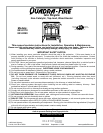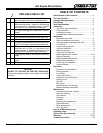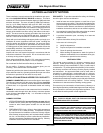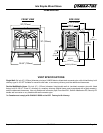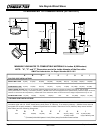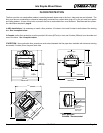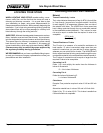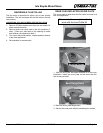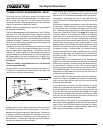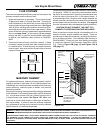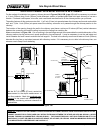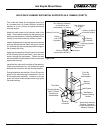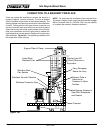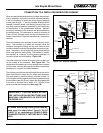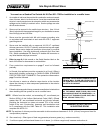
R
Page 8
September 1, 2008
Isle Royale Wood Stove
250-5763C
Calculating Alternate Floor Protection
Material
Thermal Conductivity: k value
The k value indicates the amount of heat (in BTU’s) that will ow
in 1 hour through 1 square foot of a uniform material 1 inch thick
for each degree (F) of temperature difference from one side of
the material to the other. The LOWER the k factor means less
heat is being conducted through the non-combustible material
to the combustible material beneath it. The k value of a mate-
rial must be equal or smaller then the required k value to be
acceptable.
(BTU) (inch)
(foot
2
(hour) (
o
F)
Thermal Resistance: R value
The R value is a measure of a material’s resisteance to
heat transfer. R value is convenient when more than one
material is used since you can add the R values together,
whereas you can not do this for k value. The HIGHER the R
factor means less heat is being conducted through the non-
combustible material to the combustible material beneath it.
The R value of a material must be equal or larger then the
required R value to be acceptable.
Converting k to R:
Divide 1 by k and multiply the results times the thickness in
inches of the material.
R = 1/k x inches of thickness
Converting R to k:
Divide the inches of thickness by R.
k = inches of thickness/R
Calculatons:
Example: Floor protection requires k value of 0.84 and 3/4 inch
thick.
Alternative material has a k value of 0.6 and is 3/4 inch thick.
Divide 0.6 by .75 = k value of 0.80. This k value is smaller than
0.84 and therefore is acceptable.
WHEN LOCATING YOUR STOVE consider safety, conve-
nience, trafc ow, and the fact that the stove will need a
chimney and chimney connector. It is a good idea to plan
your installation on paper, using exact measurements for
clearances and oor protection, before actually beginning the
installation. If you’re not using an existing chimney, place the
stove where there will be a clear passage for a factory-built
listed chimney through the ceiling and roof.
AVOID FIRE: Maintain the designated clearances to combus-
tibles. Insulation must not touch the chimney. You must main-
tain the designated air space clearance around the chimney.
This space around a chimney is necessary to allow natural
heat removal from the area. Insulation in this space will
cause a heat buildup, which may ignite wood framing. NOTE:
Clearances may only be reduced by means approved by
the regulatory authority having jurisdiction.
WE RECOMMEND that you have a qualied building inspec-
tor and your insurance company representative review your
plans before and after installation.
LOCATING YOUR STOVE



